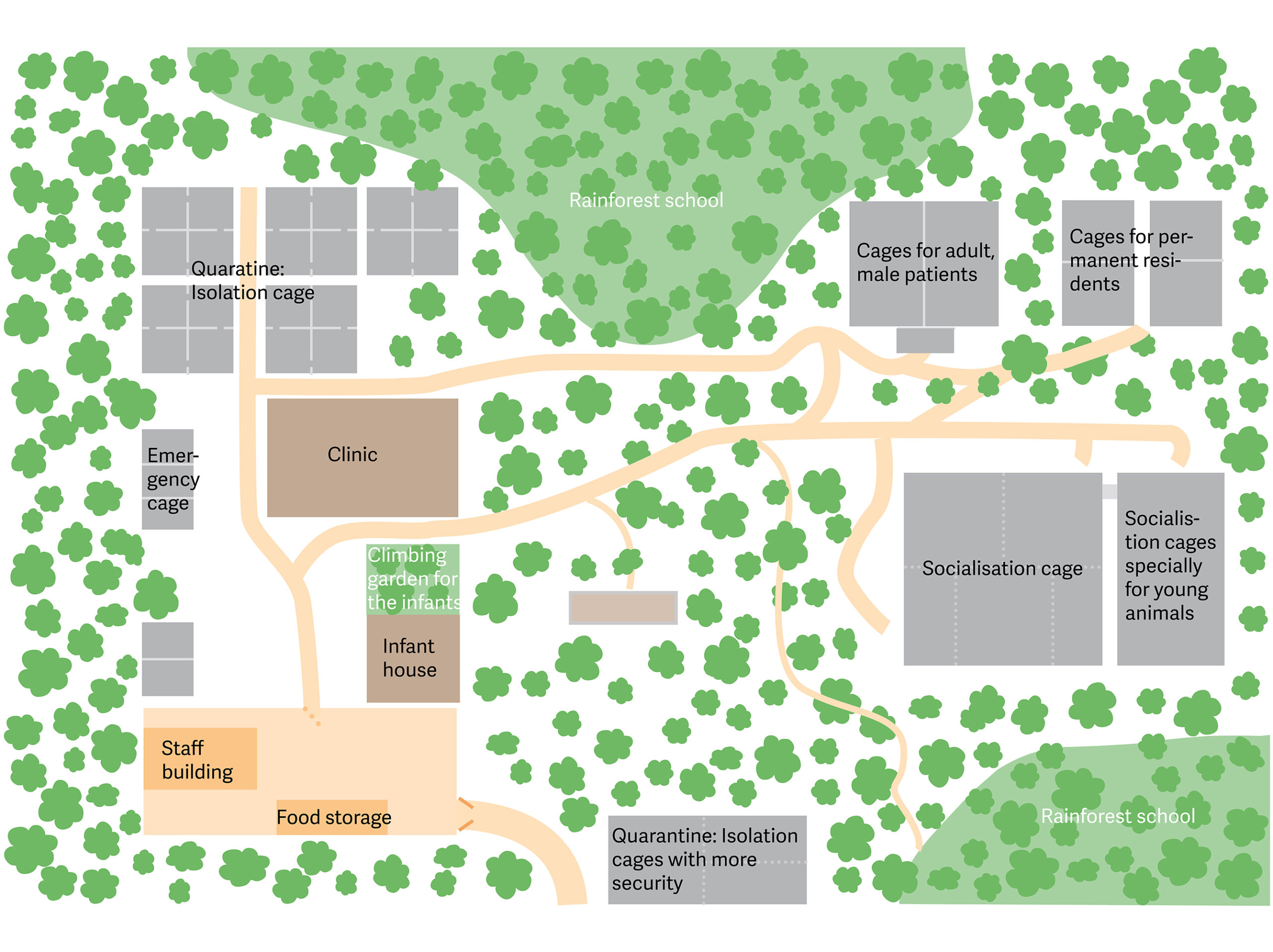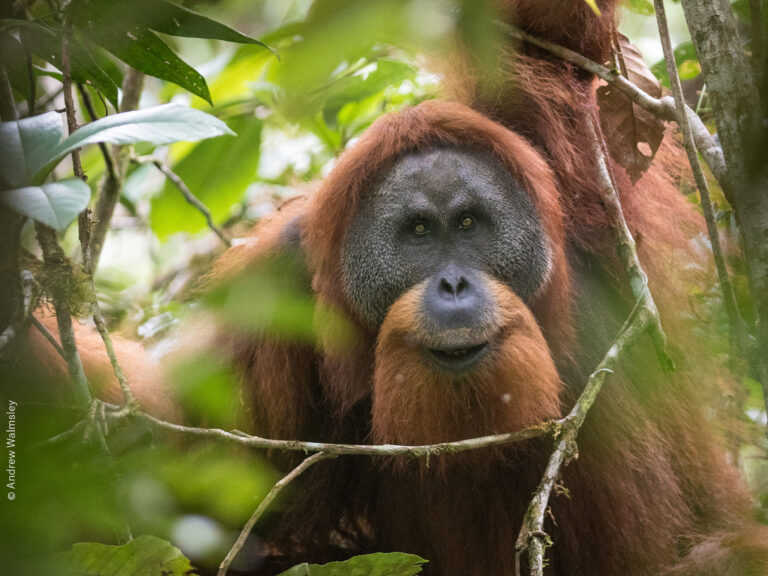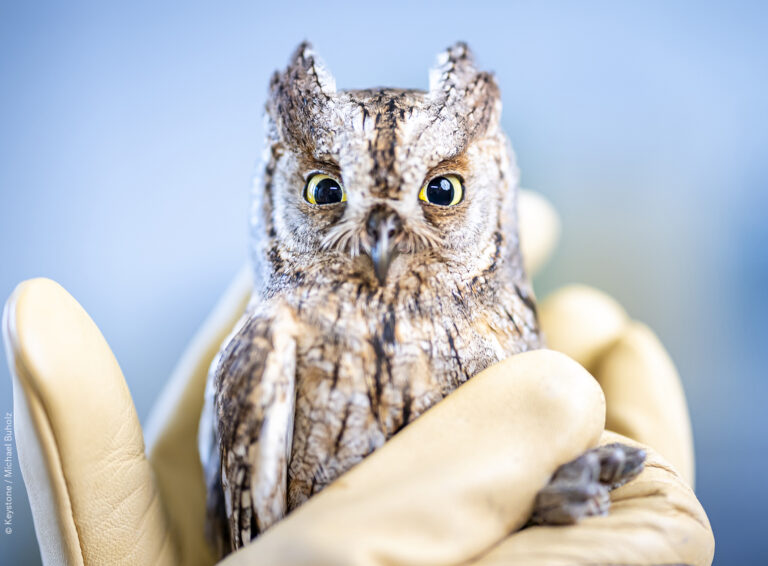
Rehabilitation and reintroduction
The constant loss of the habitat of the orangutans due to deforestation and fragmentation of the rainforest leads to the animals being isolated in too small areas where there is too little food for them. As a result, they end up in plantations and gardens, where they inevitably come into conflict with people. Many orangutans are also kept illegally as pets or end up in the wildlife trade.
Since 1998, together with our sister foundation YEL, we have taken into our station over 450 orangutans that were handed over to us by the authorities. Here they are kept healthy and, when they are ready, they are reintroduced in two protected areas. With this work we are creating two new, stable orangutan populations in their natural habitat.
Objectives
- Reintroduction: establishment of two new, independently viable and stable orangutan populations
- Healthy wellbeing and a new life for confiscated, illegally held orangutan pets
- Rescue, rehabilitation and relocation of orangutans whose habitat is too small to survive due to segmentation or who have come into conflict with humans

Achievements
- Release of around 350 orangutans in two protected areas, including 211 orangutans in the province of Jambi and 134 orangutans in the Jantho region, in the province of Aceh.
- A total of seven offspring have been sighted in the two protected areas, which means that the newly created populations are growing and self-sustaining.
- The newly created populations enlarge the geographic range and reduce the risk of extinction of the orangutans in Sumatra.
- All 462 orangutans confiscated by the authorities in Sumatra since 1999, when the Orangutan Conservation Programme was established, could be taken into our rescue and rehabilitation station, rehabilitated and released in good health in Jambi.
Quarantine and rehabilitation centre

Orangutans are protected by law in Indonesia. It is forbidden to catch them, keep them, trade with them or kill them. If such illegal activities are discovered or injured animals are rescued from an instance of human-wildlife conflict, they are confiscated by the Indonesian authorities and handed over to our team of specialised wildlife veterinarians and keepers in the rescue and rehabilitation station in the province of North Sumatra.

All new arrivals undergo a three-month quarantine period upon admission to our rescue and rehabilitation station. They receive a general health check and the necessary medical care. Giving the most traumatised animals professional treatment is an additional challenge for the veterinarians.

In the socialisation cages, the orangutans are integrated into a group of animals of the same age, enabling them to detach themselves from the imprint of us humans. Taking in orangutans in infancy involves special requirements, however. They need around-the-clock care and to be kept close to the body in order to develop healthily. For this reason, they initially live in a baby house.

All orangutans are allowed to regularly explore the wooded areas of the grounds and climb the trees. The groups are put together carefully so that they can learn from each other in the best possible way. In these climbing gardens they learn everything necessary for later life in the rainforest. The keepers monitor them constantly and record exactly what they do.

Wildlife veterinarians can treat complex physical problems on site at the clinic. For demanding operations, e.g. on the hands of the orangutans, human physicians are also called in. Fractures are often treated, but gunshot injuries are also not uncommon. In addition to medical care, the psychological state of the traumatised orangutans causes great concern and their treatment requires a lot of sensitivity and experience.

In the wild, orangutans learn all the skills they need to live in the rainforest from their mother. They have a strong attachment to her and also stay very close to her physically. That’s why the very little ones are looked after practically around the clock by the keepers. Particular attention is paid to food, which has to be carefully put together, reviewed and constantly adapted. The proximity to the keepers must not become too great during this time, so that later they can be successfully reintroduced into the wild.

Some of the orangutans in the rescue and rehabilitation station could not survive in the open rainforest due to the consequences of their injuries. We take these animals to the Orangutan Haven, where they are given a long-term, species-appropriate home. In this protected wildlife park, which we have built up over the past ten years together with our sister foundation YEL, they live on individual, green islands where they can find climbing opportunities adapted to their needs and receive optimal care.

In the case of orangutans that are brought to the rescue and rehabilitation station at a very young age, the preparations for release into the wild are complex and time-consuming. Above all, climbing skills, building a safe nest for the night and finding suitable food are essential. They also need to know which branches will carry them and they need to be able to find their way around the rainforest. These orangutans are usually five to seven years old when they are ready for release.


Dr. Yenny Saraswati
Senior Veterinarian SOCP
Reintroduction station

When a group of compatible orangutans is ready for release, they are taken to one of the two release stations of the Sumatran Orangutan Conservation Programme: either to the province of Jambi on the edge of Bukit Tigapuluh National Park or to the far north of Sumatra to Jantho Pine Forest Nature Reserve in the province of Aceh. On the last stretch going deep into the protected forest, the road is in particularly poor condition and can only be driven on by special vehicles. The difficult access is intentional, so that no unwanted visitors can approach.

The release cages are located close to the reintroduction station, in a protected area. Here the animals hone their skills and get used to the locally available food in the forest. They can still return to their enclosure at any time. Their behaviour is monitored here for around three months. Only when everything is right, they are taken to the other side of the river, where the path into the rainforest is clear.

The staff of the Orangutan Conservation Program monitor the progress of the released orangutans on a daily basis. From getting up to building a nest for the night, they record everything the animals do, what they eat and where they move to. Often, this last phase also lasts up to three months. Only in the case of orangutans that have not spent long in the rescue and rehabilitation station do they sometimes disappear very quickly so deep into the forest that you can no longer observe them.

This monitoring of freshly reintroduced orangutans is usually carried out by young men from the surrounding villages at the edge of the forest. They know the forest and know how to move through it. They are specially trained to record behavioural data and to use GPS devices in order to find their way back to the camp at any time. All data is recorded digitally in the camp and forms the basis for answering a wide range of research questions.
Akmal Qurazi
Jantho Reintroduction Centre Manager SOCP
Relocation
The team from the Orangutan Conservation Programme also rescues and relocates wild orangutans that have been isolated in areas that are too small, for example because more palm oil plantations have been established. These orangutans are in danger because they are hungry and often come into conflict with people. Relocation is a drastic intervention and always the last resort, as it is usually a difficult, risky and stressful operation for all involved. Unfortunately, such rescue operations are becoming more and more necessary.
If the rescued animals are healthy, they are relocated to a safe habitat, usually to the protected area in the province of Jantho. Sick or injured animals are first treated in our rescue and rehabilitation station before they are released at a later time.
Partner
YEL is our sister foundation in Sumarta. YEL is responsible for implementing the SOCP on site.
The SOCP is operated on the basis of an agreement (MoU) between our sister foundation YEL and the Indonesian Agency for Nature Conservation.









